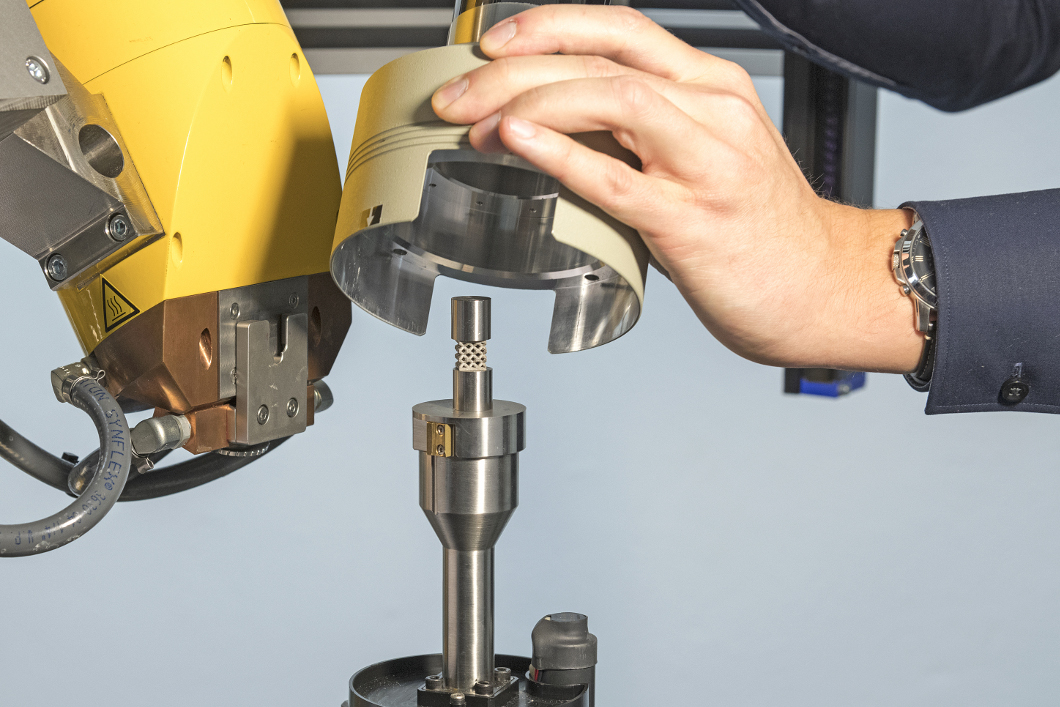
In collaboration with Siemens AG, Power and Gas, BAM is investigating the quality of AM lattice structures.
Source: BAM
Additively manufactured components and products must be safe and reliable. As the technology is still relatively new, there is a lack of knowledge with regard to assessing the quality of the parts. A reliable quality assessment is a necessary prerequisite for broad application of additive manufacturing in practice. This is especially important for safety-relevant parts for industrial applications or for medical technology. The Bundesanstalt für Materialforschung und -prüfung (BAM) is utilising its expertise in non-destructive testing to address these issues. At the Hannover Messe 2019, BAM experts will explain what role computed tomography plays in the quality assessment of additively manufactured parts.
"At BAM we are developing and assessing non-destructive testing methods for the detection of structures and defects in the micrometre range and below,” explains Prof. Dr Giovanni Bruno. "We can use this expertise for the quality assessment of additively manufactured materials and products." For example, we utilise high-resolution X-ray imaging methods, such as computed tomography and quantitative 3D characterisation of the material’s microstructure.
How do additively manufactured metallic materials and components age?
Within the multidisciplinary project AGIL, BAM scientists are investigating the material properties of additively and conventionally manufactured samples over the entire life cycle: from feedstock to mechanical failures, they are combining various characterising techniques and simulations. Computed tomography plays a central role for the detection of defects: defects within the components can be investigated before and after mechanical stresses in a non-destructive manner, and their impacts on the structural safety can thus be determined.
"Our goal is to understand the influence of material properties and defects on the life span of additively manufactured components and to predict their reliability,” explains Giovanni Bruno. “This is particularly important for safety-related parts and a decisive prerequisite for the widespread use of additive manufacturing methods in practice."
Read more on the AGIL project.
The path to higher energy efficiency for gas turbines
In cooperation with Siemens AG – Division Power and Gas, BAM is investigating the quality of additively manufactured lattice structures. The lattice structures are used in industrial gas turbines to increase their efficiency. BAM scientists use computed tomography to observe the behaviour of metallic lattice structures in the event of damage. For this purpose, the cubes are compressed, and the three-dimensional deformation of the lattice structure is observed.
"With computed tomography methods, we receive a comprehensive image of the component’s properties and can identify the weak points,” says Giovanni Bruno. “This is an integral part for the quality assurance of additively manufactured components.”
Additive manufacturing of customised medical products
Additive manufacturing is not only playing an increasingly important role in industrial applications, but also in medical technology. Products such as jawbone implants, for example, must be tailored to the individual patient – and this is one of the great strengths of additive manufacturing.
Together with European project partners, BAM is working on the MetAMMI project to develop methods that can assess the reliability of additively manufactured medical devices and customised implants.
BAM experts are also contributing their expertise in non-destructive testing for this purpose. They are involved in the development of methods and standards required for the reproducible testing of additively manufactured parts. Computed tomography plays a central role, as it enables a comparison between planned and actual additively manufactured structures. As a result, deviations can be detected, and implants can be adjusted to the needs of the individual patient.
Read more on the project Metrology for additively manufactured medical implants


